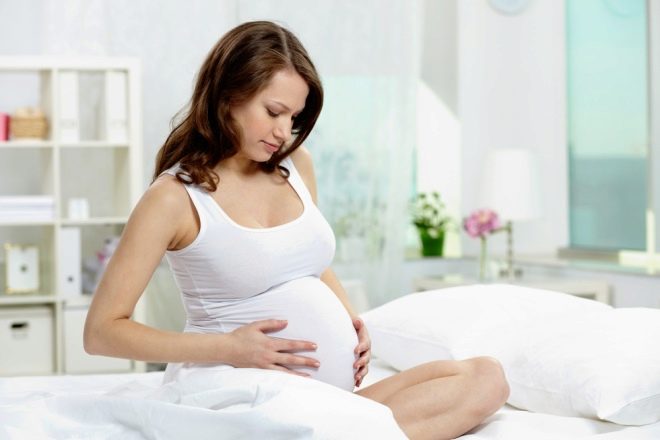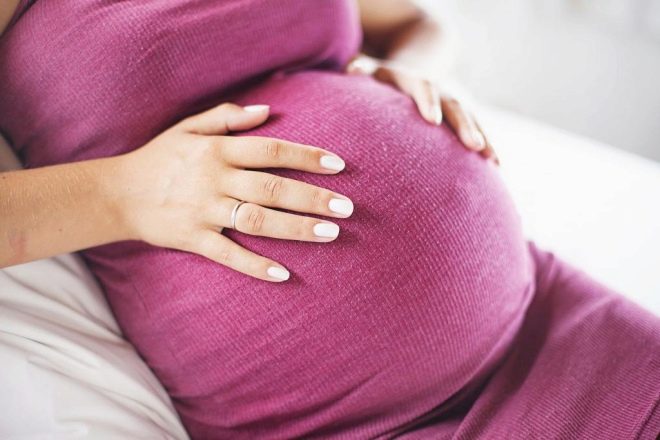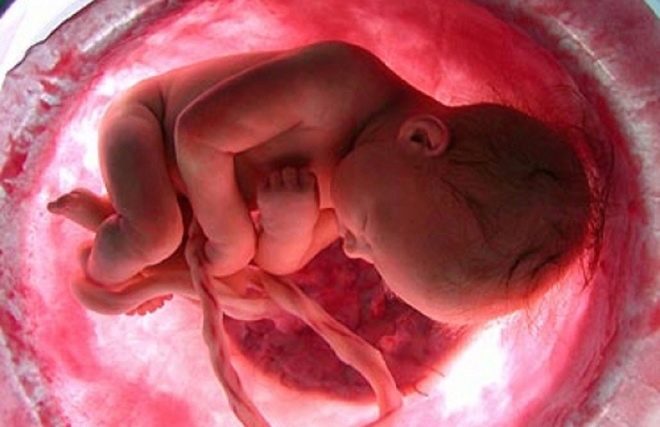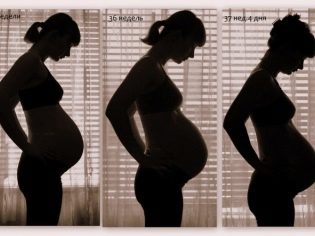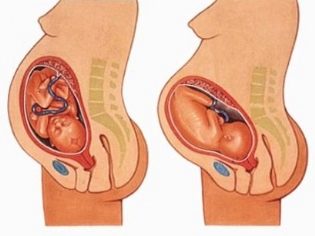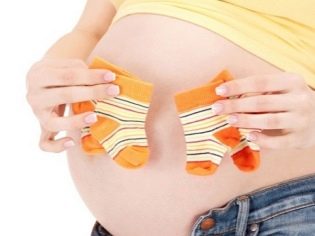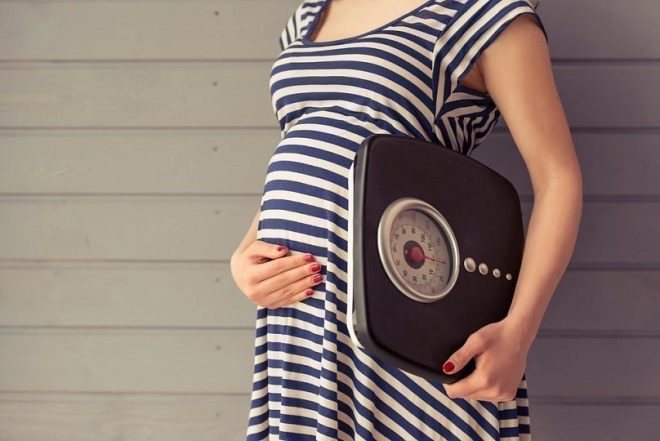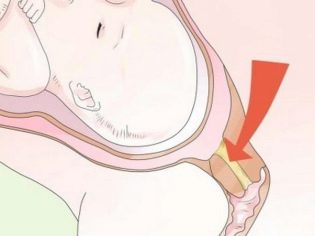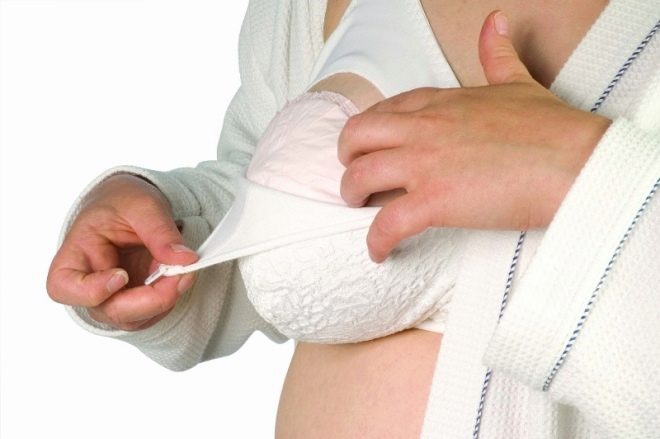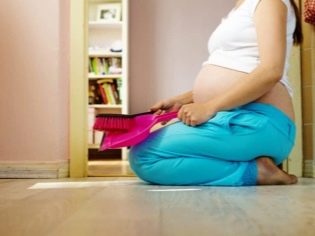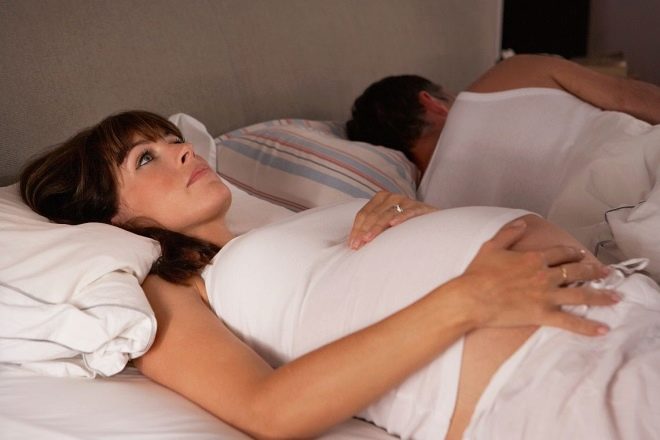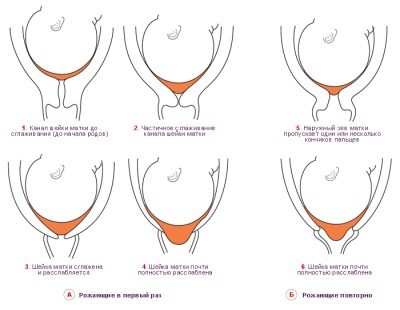Harbingers: Important Signs of Upcoming Birth
The woman's body is designed so that it is impossible in principle to miss the beginning of labor. Carefully monitoring your own condition will allow a woman to prepare in advance. The main thing is to sensitively listen and hear your own body. In this article we will talk about the signs of approaching childbirth, the so-called "precursors", which very often raise a lot of questions in both primiparas and women who are going to give birth again.
What it is?
Long before the development of medicine, women were able to distinguish among others the special sensations that allowed them to understand that childbirth would begin soon. For representatives of some nations, this was a sign that ordered to leave the village, since traditions prescribed giving birth away from home and returning only when the baby was born. For other women, signs of early labor were prescribed to heat the bath, to negotiate with the midwife, to inform relatives, to attend church.
Harbingers are called a set of symptoms that directly or indirectly indicate that labor is approaching. For each individual woman, this “set” of sensations can be different, it all depends on the individual characteristics of the organism of the future mother.
Harbingers - the term is not medical, but more popular. They are direct and objective, but they are subjective and indirect. The first group of symptoms can be attributed to signs that are not subject to a dual interpretation, for example, preparation and maturation of the cervix. The second group of symptoms is the symptoms noticed by many generations of women, which do not always have a medical explanation and are not always directly related to childbirth, but also allow us to recognize the beginning of the preparation of the female body for the birth of a child.
Physiological rationale - causes
"Harbingers" do not appear just like that, from nothing. They are always due to the global restructuring that takes place in the body of the future mother during pregnancy at the latest dates. The principle of “external reflects internal”. In other words, all internal changes that a woman sometimes does not even realize are somehow manifested outwardly. It is these manifestations that dictate the character of the “forerunners” as such.
The processes inside the female body preparing for childbirth are very complex and large-scale. All of them with the progress and development and lead to the beginning of labor activity - an act of reflex, not subject to the efforts of the will. To give birth began, you need sufficient readiness of the uterus. Female reproductive organ closer to childbirth is gaining a solid weight and size. The neuro-contractile uterine apparatus begins to be prepared. By themselves, the cells of the myometrium, of which the uterus consists, are not very capable of contracting. But before childbirth, they stock up on a special protein, which they themselves produce - actomyosin. It is he who will enable the cells to contract, which will appear on the physical level as contractions.
Aging of the placenta, which inevitably begins after 34-35 weeks of pregnancy, reaches a peak. In the last few days of pregnancy, she and the pituitary gland begin to produce the hormone oxytocin, which is necessary to ensure the contractility of the uterus. The balance of hormones in a woman's body is changing. Progesterone becomes less estrogen and oxytocin - more, which certainly affects the nervous system.
A couple of weeks before giving birth, the female reproductive organ gets rid of the excess part of the nerve fibers. This mechanism is provided by nature to reduce pain. The central nervous system is also being prepared - the excitability of the brain decreases, and that of the spinal cord increases. Myometrial receptors become extremely sensitive to oxytocin.
At the energy level, the accumulation of glycogen, phosphorus compounds, electrolytes. Some products of the metabolism of a ripened baby also start the process of preparing for birth in his body.
Preparatory changes cover all systems of the female body. That is why the appearance of certain marker symptoms is justified and has physiological explanations. No one can predict exactly how the female body should respond to internal cellular and humoral processes. That is why the signs in two pregnant women who are on the same gestation period may differ.
The first and second genera are fundamental differences.
More than others for the severity of signs indicating the approach of childbirth, experiencing women who have to give birth to a firstborn. This concern is due to the lack of generic experience. It should be noted that in pregnant women for the first time, “precursors” may appear earlier than in those who give birth again. All the processes of preparing for childbirth in a primiparous woman proceed more slowly due to the fact that the uterine tissues are more taut and less elastic, the restructuring of the body into the mode of “birth” is a novelty not only for the pregnant but also for her nervous system.
In the second pregnancy, in the third or fourth birth, the expectant mother is always more calm and balanced. She already knows the order of actions, she knows the features of her body and already knows how to listen to him. The preterm period in such pregnant women lasts more smoothly, with smaller markers. Repeated people can distinguish the symptoms of approaching childbirth from the mass of other sensations for which the third trimester is so rich.
Muscle tissue of the uterus, cervix less elastic, more stretched, elastic, so the physiological preparation proceeds less noticeably and more quickly. Therefore, signs of approaching labor should be expected later than during the first pregnancy. Feelings have a smaller emotional color, and therefore sometimes they are almost indistinguishable. This may explain the situation when women claim that they did not feel any “precursors” at all.
After the onset of symptoms of the approach of labor during the first pregnancy, it may take up to a month before the birth begins. With repeated pregnancy, symptoms may appear in just a week or several days before the development of reflex labor, and sometimes signs appear in just a few hours or with the onset of labor.
The birth itself also differs according to the generic experience. In primipara all stages last longer. Experienced mothers and the body as a whole, and the birth canal in particular, are better prepared for the birth of the baby, and therefore the periods of childbirth are significantly reduced.
When do they start and when to wait for the birth?
This question is one of the most important for women. They search for the answer to it both on the Internet, and in conversations with other pregnant women, and with the attending physician, but they do not receive it. There is no single beginning rate for prenatal training. When it manifests itself, depends on many factors, which are mostly individual.
On average (so average that you don’t try on these dates), for primiparous women, the first “harbingers” may show up at 35-36 or 36-37 weeks of gestation. For multiparous - later. Most earlier - at 38 weeks, but most often at 39-40 weeks. And those, and other signs may not appear at all, and this woman must also be ready, because in this matter everything depends on individual sensitivity.
The second no less important issue is that after how many precursors begin full labor activity. Statistics states that in the DA (estimated day of birth) no more than 5% of babies are born. During the first birth, a woman can carry a pregnancy and up to 42 weeks, it will not be considered postponed. The largest number of children prefer to be born at the 39-40 week, that is, a few days before the DA. In this way, from the onset of symptoms - markers of readiness to the onset of labor during the first pregnancy, it may take from 3-4 to 2 weeks (again, the data are rather average).
During the second or subsequent pregnancy, from the appearance of “precursors” to the development of labor activity, it may take a week or maybe several hours. According to statistics, at 38-39 week, up to 70% of the second, third and subsequent children in the family are born. Up to 40-41 weeks they don their babies no more than 2% of multiparous ones. Every tenth crumb, which is to become the second or third in the family, appears before 38 weeks. The rest of the babies, like those of the firstbirds, prefer 39-40 weeks.
The absence of obvious and distinguishable "forerunners" should not be misleading - childbirth is not postponed. The early appearance of signs suggesting that labor is approaching should alert the woman, especially if she belongs to the number of multipliers - it is possible that there are precursors of preterm birth. The appearance of symptoms up to 36 weeks in multiparous and up to 34 weeks in giving birth for the first time is considered early.
In any case, the appearance of two or more signs means that the birth of the baby is near. It’s time to finish everything that was postponed until later, to buy everything you need for the baby, choose a maternity hospital and sign the exchange card, if this has not been done before, collect a bag with things in the maternity hospital and mentally tune for easy and positive childbirth.
Common symptoms
Particularly impressionable future mothers can “think up” to themselves any signs. Therefore, you should know exactly what symptoms may be a hint for a future mother in labor that it is time to prepare, and which symptoms appear only when health problems appear. In the later stages of pregnancy, it can also be complicated, because the female body is under serious strain.
Abdominal prolapse
This feature is considered fairly reliable, it is one of the first. By the end of pregnancy, the large uterus occupies almost the entire space of the abdominal cavity, violating the territorial claims of other internal organs and their work. But one day it becomes noticeably lighter - a woman can breathe again with a full breast, they stop painfully breaking and hurt her ribs. This means that the stomach is lowered.
At the physiological level, the following happens: under the action of unknown factors, the child begins to take the most comfortable position for the “start” - he sinks into the uterus as low as possible and presses his head to the inner throat as tightly as possible. Immediately, as soon as after the period of contractions the neck opens, the baby will be able to begin his movement along the birth canal towards a new and interesting life among us.
Due to the change in the position of the body of the crumbs, the uterus is somewhat stretched out, becoming more oval. The tummy, and in most cases quite obvious to others, looks smaller than even a week ago.
The diaphragm is released - the woman's breathing is restored again, and shortness of breath decreases. There is no more pressure on the stomach, so heartburn practically disappears. But the pressure on the bones of the pelvis, on the bladder and intestines increases. In this connection, after abdominal ptosis, the perineum begins to quite painfully affect the woman’s pubic joint, if there was a symphysitis, its manifestations increase. The gait changes - pressure on the pelvic bones makes a woman very clumsy and funny, she rolls herself from foot to foot, like a duck.There is a pulling and breaking pain in the lower back.
A woman begins to visit the toilet more often because of little need, since the baby’s head presses against the bladder. Some begin physiological urinary incontinence - the contents of the bladder leaks when coughing, laughing, sudden movements. Constipation may intensify or another “attack” may appear - loose stools due to pressure on the intestines.
In primiparous, abdominal prolapse most often occurs 2-3 weeks before giving birth, for giving birth again - either 1-3 days, or several hours before giving birth, or already at the beginning of the first, latent period of contractions.
It should be noted that the stomach does not fall in all women preparing for childbirth. So, in future moms who are carrying two or three children at once, the omission is physically almost impossible or it is so indistinguishable that the woman will not feel the difference exactly.
The position of the fetus in the uterus, if it is different from the head (that is, the baby sits or lies across the cavity of the reproductive organ), will also prevent the abdominal prolapse. Another common reason for the complete absence of such a marker of approaching labor is polyhydramnios.
Weight loss
Shortly before giving birth a woman loses weight. This feature was noticed a long time ago. Loss on average is 1-3 kilograms. With what it is connected, it is easy to guess. First, hormonal adjustment takes place. It becomes less progesterone, and it was he who was responsible for the supply of nutrients and fluids for the duration of the gestation period, since its role is to preserve the pregnancy and the baby’s food. With a decrease in progesterone levels, excess fluid from the tissues begins to flow out, which contributes to weight loss.
In the later periods it is physiologically necessary to reduce the amount of amniotic waters. The child grows, he actively gains weight every day at the end of pregnancy, if the volume of the amniotic fluid remains unchanged, the uterus will simply burst. Reducing the amount of water can balance intrauterine pressure. Reducing them also affects the weight of the pregnant.
Almost always, before childbirth, a woman's body is cleared of everything superfluous and unnecessary in order to enter into a responsible period light. Therefore, women often begin to complain of loose stools. A few days before the birth of the child, the maternal organism does everything so that nothing interferes with the uterus, including intestines overflowing with feces.
Weight loss woman feels very good. She gets a little easier. But body weight may not change or increase. It can remain unchanged in women with severe preeclampsia, during pregnancy with twins or triplets, with pathologies of the kidneys and urinary system.
If nausea has begun, diarrhea has appeared, the woman must necessarily inform the attending physician about this. Optionally, this unpleasant symptom will mean the approach of labor.
It can be food poisoning, and intestinal infection, and therefore only a specialist can recognize what is actually happening. Vomiting and diarrhea at the same time are very dangerous because they are fraught with dehydration.
Discharges and mucus plug
As the female body approaches the state of readiness before childbirth, the nature of the discharge from the genitals changes. Reducing progesterone makes the selection more abundant and watery in consistency. But the main reliable sign, allowing to evaluate the preparation for childbirth and determine their speedy approach, is the selection of the so-called mucus plug.
It is a thick jelly-like clot of mucus. Immediately after conceiving a baby, the cervical canal inside the cervix is tightly closed by the accumulation of this mucus, hence its name - cork. The task of this cork is to protect the new life growing in the uterus from the probable unauthorized ingestion of bacteria, viruses, fungi.
When the body begins to prepare for childbirth, the cervix becomes shorter by about one and a half centimeters, the round muscle gradually softens. As a result, the walls of the cervical canal begin to gradually expand. At the cork one day the physical ability to stay inside the canal is lost and it comes out through the genital tract.
The discharge can be complete, in which a large clot comes out immediately, and can be sluggishly gradual in nature, in which jelly-like fragments will be found in the secretions. The cork looks quite recognizable - it is a clot of a milky, beige or yellowish shade with or without blood streaks.
During the first pregnancy, the stopper usually leaves 5-6 days before delivery. Before repeated delivery, this symptom makes itself felt most often in one or two days. It is not considered something out of the ordinary if the cork leaves its rightful place already in the process of childbirth.
This “precursor” is considered to be quite informative, but self-diagnosis can be difficult. For example, a woman may not notice a stopper during sex, while bathing in the shower or during a bowel movement. Such difficulties often arise in re-giving birth, since their cervical canal expands at a faster rate. Primiparous most often cork discharge is noticed, since in more than 60% of cases it departs gradually.
After the discharge of the mucus plug or the beginning of its gradual release, it is necessary not only to prepare for childbirth and hospitalization, but also to remember that the baby inside the uterus is defenseless - it is possible that viruses and bacteria, conditionally pathogenic flora, which in large numbers inhabit the intestine, enter through the tightly closed cervical canal into the uterine cavity.
You can not wash out from the anus to the pubis, the movement should be exclusively reverse. You can not take a bath to prevent the penetration of an infectious agent into the uterus from tap water, and it is not recommended to have sex.
Breast readiness
Many pregnant women say that a few weeks before the birth begins to hurt the chest. More specifically, certain painful feelings in a pregnant woman are present throughout the entire period of gestation, just before labor, they intensify.
The mammary glands look poured, large, swollen, with a pronounced venous blue mesh and enlarged areoscula circles. Before delivery, primipara women often begin to stand out colostrum - a special thick substance that is not yet a sign of the arrival of milk. Isolation of colostrum suggests that the preparation of the mammary glands also entered its final stage.
Divergent women with colostrum usually have a special relationship. After breastfeeding of the first child, the ducts of the glands are wider than in nulliparous, additional lobules grow more rapidly, and therefore the release of nutrient fluid from the nipples can begin almost in the first trimester and continue throughout the entire gestation period. Therefore, for those who remind others, this “harbinger” is considered not very informative.
A woman after the appearance of colostrum should not squeeze it. Should pay close attention to the hygiene of the mammary glands. If you ignore its requirements, the penetration of the infection into the milk ducts is not excluded, because colostrum is a nourishing and favorable environment for the reproduction of bacteria. It is necessary to wash the chest at least twice a day with warm water. If the nipples hurt, then the water is better to make cool - this will help reduce discomfort. It is recommended to wear a special bra that will support heavy mammary glands.
If colostrum flows intensively and in large quantities, you can use lingerie for nursing - in the cups of this bra there are specially provided "pockets", you can insert disposable absorbent liners into them.
Considering this “precursor” separately does not make sense because of its considerable subjectivity. But in combination with 2-3 other symptoms, he may well suggest that childbirth is not far off.
Nesting instinct
Very doubtful "forerunner", which was seen in ancient times. Syndrome or nesting instinct is a special psychological state in which the expectant mother becomes literally obsessed with cleanliness and order in her home, she is ready to engage in beauty in her home all day long, almost without feeling tired and heavy.
Such an instinct, which "turns on" shortly before the birth of offspring, is peculiar to the females of many mammals. And in some amphibians and birds the responsibility for creating comfortable conditions for the female and the offspring lies on the male.
Human males to arrange the premises before the birth of a child, to put it mildly, are indifferent. But women often wake up the ancient instinct, the task of which is to create the most comfortable conditions for growth and development for the defenseless offspring after birth.
It is believed that the manifestation of such an instinct markedly improves the psychological and emotional state of the future mother — the household troubles and the arrangement of the children's room for the long-awaited baby pass by unnoticed, and there is no time for worry, anxiety and fear.
Changes in the child's behavior
The motor activity of the baby before childbirth decreases. Usually even very mobile and active children calm down and calm down about 4-5 days before their birth. Movement becomes difficult for the little man, because in the uterus there is almost no free space.
In addition, scientists assume that the child begins to gain strength and accumulate energy in advance, because for him passing through the birth canal is also a big and serious test that will require maximum strength.
When evaluating the behavior of the baby to the woman, it is important not to miss the points that indicate a possible pathology and which are not a sign of approaching childbirth. So, one should continue to consider perturbations.
If you don’t have 10 episodes of activity in 12 hours, you should definitely consult with your doctor, it’s possible that the baby’s condition will require early delivery or treatment.
Changes in mood and psychological state
A few days before giving birth, according to reviews of the parturient women, the mood changes almost uncontrollably. A woman can be funny and positive, but after half an hour she will feel unhappy and be very anxious. Night sleep is disturbed - a pregnant woman is suffering from insomnia. Such changes in the emotional background are due to the hormonal changes mentioned above.
Sleep problems have additional prerequisites - it is difficult to find a position in which it would be convenient to fall asleep and not wake up, because the uterus is large and weighs heavily on the pelvic bones.
No matter how difficult it was, but you need to sleep and get your nerves in order at any cost. For childbirth, a woman needs a lot of strength and energy, blood pressure should be stable. Therefore, it is imperative to ask the doctor to prescribe light vegetative sedatives, as well as before going to bed for a walk in the open air and to air the bedroom well.
Cervical ripening
This is the surest sign of early onset of labor. Only at home, by our own efforts, it is impossible to estimate how much the neck was prepared for the onset of labor. Need a survey of an obstetrician-gynecologist.
Mature cervix shortened to 1-1.5 centimeters, it is quite soft and its contours somewhat "blurred". So she is preparing for the subsequent disclosure, which starts with the first generic contraction.
Sometimes when the cervix matures, women feel tingles inside, and discharge from the genital tract becomes more abundant.If the 39-40 week of pregnancy is suitable, and the cervix is immature and there are no signs of the onset of maturation, the woman is recommended to be hospitalized in a hospital where the cervix is prepared for childbirth using various medicines and medical techniques.
Changing the nature of false labor
False labor during pregnancy is not all women experience. But those who know firsthand what training contractions are, may notice a week before the birth that the short-term stresses of the uterine walls have increased. If during the whole period a woman has not experienced anything like this, then 7-10 days before delivery, preparatory contractions can start for the first time.
It feels like a feeling of heaviness in the stomach, the uterus stiffens, becomes like a stone, and then the tension subsides. To overcome possible uncomfortable feelings is quite simple - you can take a shower, drink an antispasmodic drug, walk, change posture, breathe deeply and steadily as taught in courses for future mothers.
When labor contractions begin, all these tips will not take action, since they will be repeated with a certain frequency and will increase with the passage of time.
Other symptoms
Prenatal precursors can be many-sided. According to the reviews of women, some people have a fever a couple of days before the birth, with no signs of SARS or any other disease. Some people increase their appetite, while others, on the contrary, disappear. According to reviews, it may even appear skin itch on the nerve soil.
Howbeit, Two events can be considered as reliable signs of childbirth - the discharge of water and the onset of labor contractions. In the first case, a woman should immediately go to the hospital. In the second, you can stay at home until the interval between contractions is reduced to 5-10 minutes for nulliparians and 10-15 minutes for multiparums. At this point, you should call an ambulance and go to the obstetric institution.
How to understand that childbirth began and define contractions, see the next video.

